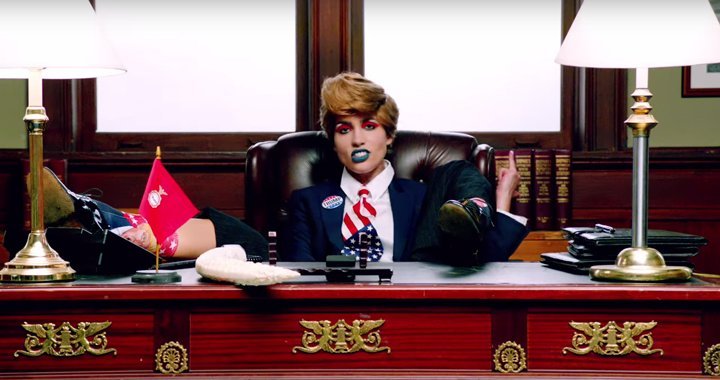
EFFECT OF POLITICAL EVENTS ON ART IN 2016 AND 2017
10/01/2017
The political events of the last year couldn’t have been ignored by even the most passive and indifferent of individuals. Consequently, asked its surveyed group the following question: How have the past year’s political events influenced the art world? – with a follow-up query that was more predictive in nature: How do you think political events could influence art and cultural processes in the upcoming year of 2017? Behold, their replies:
Brigita Reinert, art theorist, critic, and editor (Estonia)
There are many possibilities, and it’s always a bit hard to predict what will happen. I think the future of the arts is open to three broad options: the humanistic view, which includes searching for humanity, balance, and security; a political praxis, which will stand up against censorship, extreme nationalist policies, a post-truth society, etc.; or, an endeavor to withdraw from all socio-political conditions and move toward neutrality, which could result in analytical art. Maybe after Trump and Brexit, the most important question to arise is whether artists will try to avoid all of these problems, or instead, will create a dialogue and deal with these issues.
The upcoming 57th edition of the Venice Biennale exhibition, curated by Christine Macel, will be titled “Viva Arte Viva.” In a statement explaining the decision, Macel writes, “In a world full of conflicts and jolts, in which humanism is being seriously jeopardized, art is the most precious part of the human being.” I also have a feeling that more universal and humanistic values are something which could be strongly valued in the future. The political situation might affect art in such a way that contemporary art will no longer strictly follow its own boundaries of elitism, but will try to create more contact with a wider audience – such as public works of art in urban spaces, interactive works, etc. Since we live in a “post-truth” world (and are also constantly reminded of the fact) – one which is being constructed by political manipulations, and accompanied by so many wars, terrorism, and tragic and anxious events – then, in a sense, I would hope that the artists’ approach will become more honest, vulnerable, and empathic. The role of artists could lie in the intentions of pursuing equality, freedom, and transparency – more than ever before.

Day to Day (2013) by Hungarian artist Csaba Nemes, in which he speaks about a timely topic in today’s Hungary – the removal of historical monuments and their replacement with new national heroes. Courtesy of Knoll Galleries Budapest & Vienna
Laura Rutkute, creative director of the Vilnius gallery Vartai
For ages now the political situation has been influencing the art world, and so it does nowadays as well, at a diversity of levels and aspects – such as taxes, censorship, control, isolation, or even using art for propagandistic purposes. The latter might become even more prevalent in the future, I am afraid. We do not need to look far for examples; it may suffice to refer to the happenings in Hungary after the right-wing party came into power. No need to mention Russia, Turkey, etc. The political situation is getting more and more unpredictable, and so is its influence on the art world.
Lithuania has a newly elected government, much to the surprise of most of my fellow countrymen. It is very difficult to predict the actions of this new government because their members were previously not politically active in most cases. However, cultural reforms seem to be on their list of priorities – luckily, to the benefit of artists and art institutions. At the same time, they are seeking to make the country attractive to international artists of all kinds. How far this will take us, only the future will show.
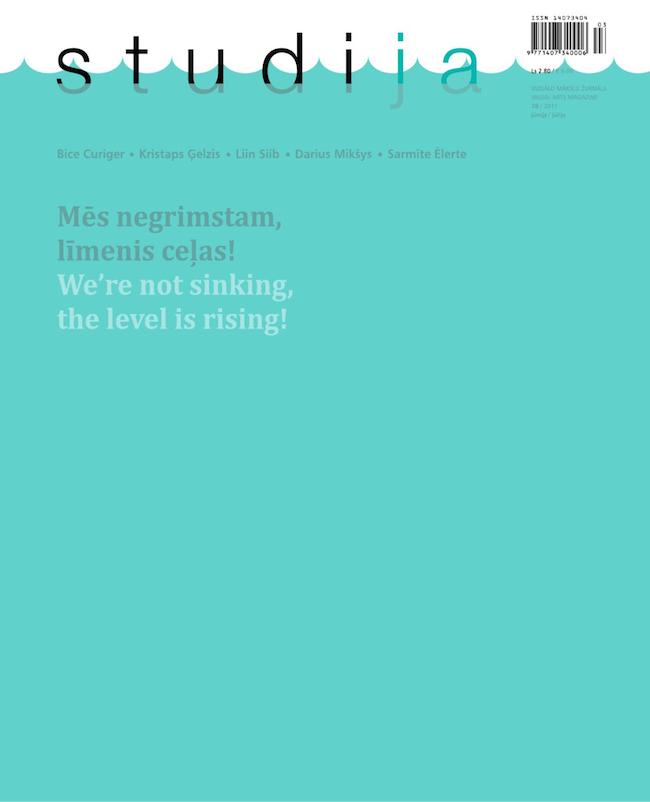
Kaspars Groševs, artist (Latvia)
I would like to hope that we won’t see a new wave of simplistic and superficial “political art”, although, it seems that can’t be avoided. In speaking of challenges, for some reason I remembered the cover of an older issue of the visual arts magazine Studija – it said: “We’re not sinking – the level is rising!” In my opinion, a statement that is still very much relevant.
Erwin Wurm, artist (Austria)
Art is always a mirror of society. This is a very dangerous time. The fact that we live in European countries with problematic geographical situations, yet we are connected by the great idea of a group of states without inside borders, creates a very specific situation; I’m sure that it will spout a certain drama, one which will also be reflected in art. And for myself as well – for the next Venice Biennale, I will make a political work.
Francisco Martínez, anthropologist (Spain/Estonia)
A taste of bitterness is extending across Europe today because of the increasing difficulties of social integration, xenophobia, and the politics of resentment. In 2017, we should turn these negative dynamics into a motivation to work, since our exhibitions, articles, teaching, and cooperation are more relevant than ever.
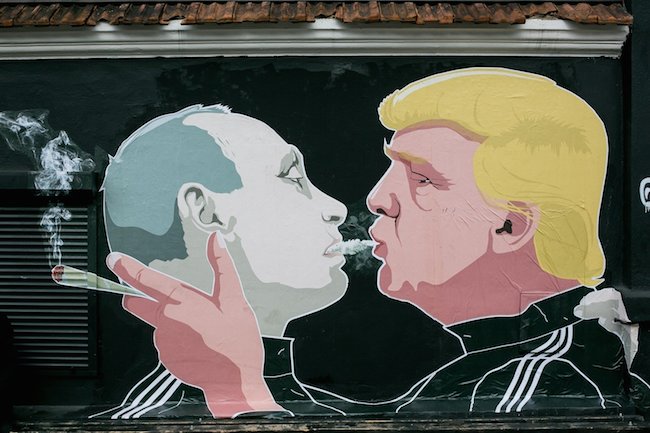
Trump-Putin graffiti on the American fast-food restaurant Keulė Rūkė, in Vilnius. Painted in the Lithuanian capital, the graffiti resembles the famous painting on the Berlin Wall picturing the 1979 kiss between the Soviet leader at the time, Leonid Brezhnev, and East Germany's Communist regime leader, Erich Honecker.
Julien Robson, curator (Austria/USA)
There is much trepidation in the United States as to what effect the presidential election and governmental changes will have upon the arts in 2017. One thing is for sure: whatever the onslaught on public funding or attempts to censor the arts, artists will focus on the struggle to be seen and heard, and will give voice to sustaining the hard-won gains of past decades.
Michael Haagensen, curator (Estonia)
The rise of conservatism has caused arts funding in Northern Europe to be reduced. This will continue, and the crises facing the EU will also likely reduce EU funding for the arts in some countries.
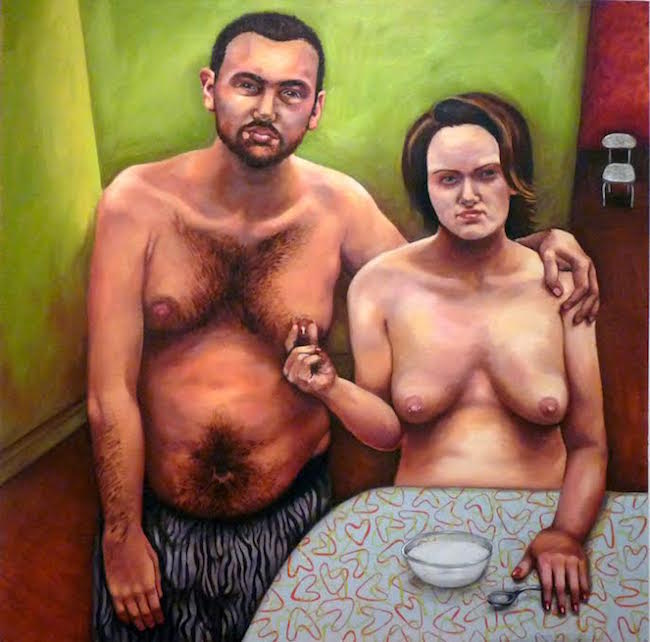
Lizzee Solomon. Man Woman Milk. Photo: plannedparenthood.org
David Kennedy-Cutler, artist (USA)
I have no prediction about how political events will effect the realm of art and culture. So far, artists in New York are rallying to fund-raise for Planned Parenthood and the ACLU, and are expressing a will to fight injustice and hypocrisy in the realm of politics. But will they fight the injustice and hypocrisy in their own art communities? How can we, as artists, retain our ethical stance when our financial support comes from the very oligarchy we just elected to run our country?
Milena Orlova, art critic, Editor-in-Chief of The Art Newspaper Russia
Of course, they have influenced, definitely ‒ from cancellation of certain exhibitions to the general atmosphere of aggression and distrust. I expect that art people are going to practise self-censorship increasingly often, afraid to deal with any sort of sensitive political subjects in their work. And vice versa, many artists will be seduced by the temptation of political conjuncture, focusing all their energy on topical protest statements, not always backed up by adequate artistic content.
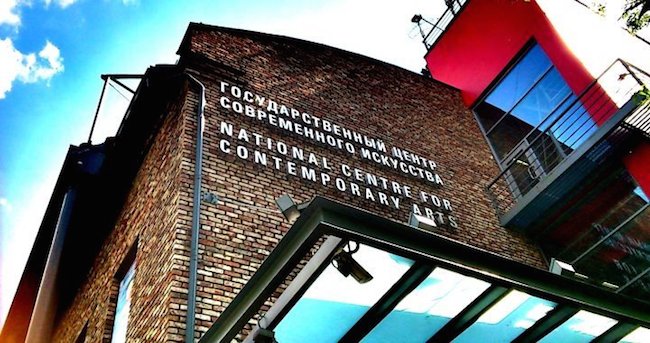
Former building of The National Center for Contemporary Art (NCCA) in Moscow
Sergei Khachaturov, art critic and curator (Russia)
This year in Russia proved that reaction is attacking on all fronts. And the whole of the so-called leftist discourse, coddled and supported with money and programmes, turned out to be incapable of building a dialogue with the same popular masses whom it supposedly is addressing. Arrogance; hypocrisy; greed; desire to latch on to wealthy grant dispensers and cultivate their own elitist ‘bird language’, completely useless and borrowed from the matrices of post-structuralism: these are the reasons why society in various countries haven’t paid the slightest attention to the weak squeak of the Left when making its choice. If the Left will not learn to communicate with people, will not find strength to engage in a positive critique of the society, will remain insensitive to their opponents and continue to despise the aesthetics of interaction with everything they do, marginal losers are what they will remain. I would like to point out that the bureaucrats sitting in the offices of art institutions and calling themselves leftist are actually very convenient for the regimes protecting capitalism. They are hand-fed and exert no influence whatsoever. I am sorry, these people are not the Left.
Liisa Kaljula, curator (Estonia)
Sometimes it seems to me that subject wise – not enough. I never thought much of the art that reacted to difficult times by creating a bubble to protect art´s own institution. This happened in the Soviet Union and the result is that large part of the art created in its underground tells us very little about its own specific context. We don´t live in the rosiest of times, but especially in difficult times we need art to help us reflect where we are or mobilize our empathy for some action or sometimes simply console. I hope and I am counting on art to do more of all these things in the upcoming year.
Bo Nilsson, Artistic Director of Artipelag (Sweden)
The world is going bonkers and repression is becoming more and more intense. The arts are threatened, but there’s also hope for civil resistance.
WORTH READING:
EXHIBITION OF THE YEAR 2016
ARCHITECTURE OF THE YEAR 2016
PUBLICATION OF THE YEAR 2016
COLLECTION OF THE YEAR 2016
SURPRISE AND DISAPPOINTMENT OF THE YEAR 2016